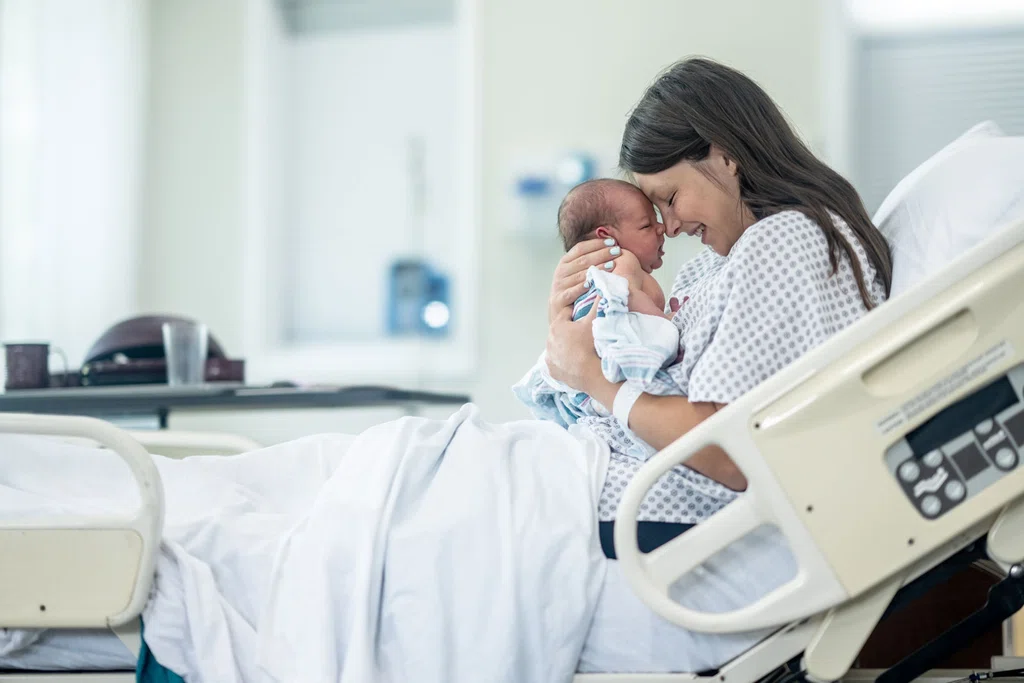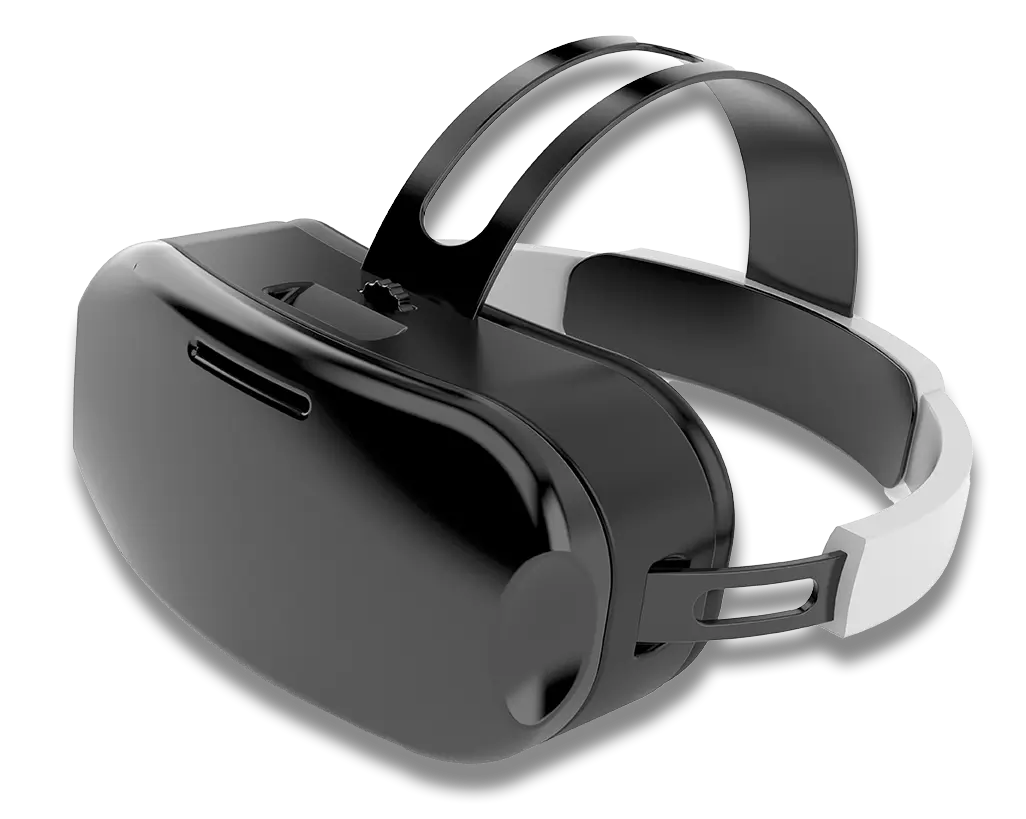


Science in Service
of
Medicineresult
President & CEO Letter
2025 Annual Metrics
Cycle of Translation
Visionary Gifts of Hope


Introduction

Ann Kimball and John W. Johnson Center for Cellular Therapeutics at Houston Methodist

Houston Methodist Dr. Mary and Ron Neal Cancer Center

The Food & Health Alliance within the Houston Methodist Lynda K. and David M. Underwood Center for Digestive Disorders, Immunology Center and the Fondren Inflammation Collaborative

Houston Methodist Cockrell Center for Advanced Therapeutics

Paula and Joseph C. “Rusty” Walter III Translational Research Initiative

Jerold B. Katz Academy of Translational Research

Infectious Diseases Research Fund

George and Angelina Kostas Research Center for Cardiovascular Medicine

New Endowed Chairs Positions

EnMed

Center for Bioenergetics

From Discovery to Clinic


What is "Discovery to Clinic"?

Clinical Research


Houston Methodist Conducts First-Ever Study into a Challenging Situation

Can Regulating Cellular Aging Mitigate Both Cancer and Heart Disease?

Innovative Treatment for Chronic Rhinitis is Safe and Effective


Masters of Disguise: Glioblastomas Trick the Immune System by Masquerading as Reproductive Tissue
Improved Options for Patients with Severe Retinal Vascular Disease

A New FDA-Approved Treatment for Sufferers of Chronic Constipation

Houston Methodist joins the Gulf Coast Consortia

Outcomes, Quality and Healthcare Performance


New Findings on RNA Helicases May Yield New Intestinal Disease Therapy

Houston Methodist and Pennsylvania State University Collaborate on a Smartphone App That Could Revolutionize Stroke Diagnosis

New Frontiers to Improve Cardiovascular Medicine and Disease Management

Ongoing Lessons in a Pandemic

Transplants can Boost Survival Rate of Patients with Unresectable Liver Cancers

Telehealth Video Visits During the COVID-19 Pandemic – a Glimpse into the Future?

SARS-CoV-2 Induced Chronic Oxidative Stress and Endothelial Cell Inflammation May Increase Likelihood of Cardiovascular Diseases and Respiratory Failure

Restorative Medicine


Lessening Pain After Knee Replacement Surgery

Do Motor Neurons First Die in the Brain? Study Provides Clues about ALS Origins

Bringing Back Hand Function in People with Complete Spinal Cord Injury

Novel Vascular Engineering Platforms Are a Boon for Bioengineering

Ultra-high-Resolution Scanner Reveals if Knee Injury Advances to Osteoarthritis

Houston Methodist Model Demonstrates Reversal from Heart Failure State, Creating the Potential for Innovative Treatment Avenues

Precision Medicine


Rapidly Scalable, All-Inducible Neural Organoids Could Facilitate Drug Screening for Neurological Diseases

Importance of the Coronary Artery Calcium Score in Risk Assessment and Prevention of Atherosclerotic Cardiovascular Disease

COVID-19 Infection in Crucial Brain Regions May Lead To Accelerated Brain Aging

Interleukin 9 Secreting Polarized T Cells Show Potential in Solid and Liquid Tumor Treatment

The NanoLymph: Implantable. Adaptable. Anti-cancer

Science in Service
of
Medicine
From the President
2025 Annual Metrics
Cycle of Translation
result
Educational Impact
Collaboration, innovation and education go hand-in-hand and are critically essential in training the next generation of physicians, researchers, caregivers, medical engineers and learners through emerging technologies that will pave the way for better health.

01
Synchronizing Maternal and Neonatal Emergency Care


From high-realism mannequins to standardized patients and virtual reality, simulation training has helped health care professionals hone their skills for decades.
These critical training tools improve health care effectiveness and efficiency while fostering open conversations about human error and how to improve situational responses. While simulation training has historically been siloed—nurses training nurses and doctors training doctors—simulation collaboration among various health care professionals has grown in the last 20 years.
Take maternal and neonatal care, for example. According to a 2023 March of Dimes report, U.S. maternal deaths have nearly doubled since 2018, and infant mortality remains alarmingly high, especially among Black birthing people.
Now, a national team of anesthesiologists and surgeons are specifically calling for more collaboration between simulation and health care quality professionals to improve patient safety and quality of care. This call to action was published in Simulation in Healthcare and The Joint Commission Journal of Quality and Patient Safety.
Randolph H. Steadman MD, MS
"Quality of care and patient safety are two areas where simulation is underutilized,” explained Randolph H. Steadman, MD, MS, Carole Walter Looke Centennial Chair in Anesthesia and Critical Care and co-author of the call-to-action paper. “The reason is that quality and simulation professionals rarely cross paths to communicate and collaborate, resulting in missed opportunities for institutions to improve in quality of care and patient safety.”
Last year, Steadman led several Maternal and Infant Simulation Instructor Courses at MITIE in the Bookout Center. These trainings brought maternal and neonatal professionals together from all Houston Methodist campuses. In addition to learning how to work better as a team and how to simulate their own training scenarios, participants identified ways to standardize emergency response protocols systemwide. This way, health care professionals who work at multiple Houston Methodist campuses will not have to worry about code calls or emergency supply carts varying by hospital, which can increase efficiency and patient safety in critical situations.
“Data shows that we’ve since quickened our response times to treat delivery-associated hemorrhaging and pre-eclampsia in maternal patients, resulting in improved patient safety and quality of care,” Steadman said.
02
Training the Next Generation of Physician-Scientists

Education is a never-ending path. Fostering key affiliations furthers Houston Methodist’s mission to advance, through our Cycle of Translation, promising innovations into effective treatment that provides clinical benefits and impact for our patients.
One such affiliation is with the Weill Cornell Graduate School of Medical Sciences (WCGS), which has expanded its PhD program to the Houston Methodist Academic Institute’s Education Institute. This new enhancement builds upon the 16-year academic affiliation between Weill Cornell Medicine and Houston Methodist to train the next generation of physicians and scientists.
The Weill Cornell Graduate School of Medical Sciences, based in New York City, offers two Weill Cornell PhD programs at Houston Methodist in Physiology, Biophysics, and Structural Biology, and Neurosciences. These programs provide deep engagement in translational predoctoral research by collaboratively working on projects with academic medicine teams that include clinicians at the Houston Methodist Research Institute and physician-scientists at Houston Methodist Hospital.
Houston Methodist students in the program undertake the same curriculum as students who complete the programs in NYC and complete their research studies in Houston—jointly mentored by faculty located at both sites. New York WCGS faculty provide the didactic curriculum and thesis research is performed at the Houston Methodist Academic Institute (HMAI), under the direction of WCGS faculty located at both campuses. In turn, graduate students and faculty based in New York City can benefit from Houston-based faculty expertise and state-of-the-art facilities and technology at HMAI. This collaboration enhances the experience of students and faculty at both locations, promotes scientific interactions and enriches our student body.
These Houston-based students receive Cornell’s Doctor of Philosophy degrees—a first for Weill Cornell Medicine awarding the degree outside of New York.
In addition to the affiliation with Weill Cornell Medicine, the Houston Methodist Education Institute and Texas A&M University launched the Engineering Medicine Program at the Texas A&M University School of Engineering Medicine. The Institute also oversees continuing medical education and graduate medical education and supports more than 758 students and postgraduate trainees for medical, nursing, allied health and research education programs.


The Great Match Day
The Office of Graduate Medical Education hosted its annual Match Day event marking the moment when graduating students discover where they will train for residency and in what specialty. The National Resident Matching Program releases the results simultaneously to all applicants and programs across the United States.
Incoming Residents
Land at Houston Methodist
Snapshot of Matches
2024-2025 Incoming Residents
60
U.S. Graduates
(80%)
38
from Texas
(50%)
22
from other U.S.
Medical Schools
15
International Graduates (20%)
3
Urology positions in American Urological Association Match
(EnMed; Univ. Minnesota SOM; Univ. South Carolina SOM)
38
U.S. Graduates
(80%)
38
from Texas
(50%)
22
from other U.S.
Medical Schools
38
International Graduates (20%)
0
Urology positions in American Urological Association Match
(EnMed; Univ. Minnesota SOM; Univ. South Carolina SOM)
On Match Day, 75 medical students from around the world officially became incoming residents at Houston Methodist for the 2024-2025 academic year. These incoming Houston Methodist residents joined the 421 graduate medical education (GME) residents and fellows who work with inpatient teams and one-on-one with subspecialists during rotations within 76 GME programs.
Annually, Houston Methodist trains more than 41,000 students, researchers and clinicians with a team medicine and science approach that offers insight into the workings of a high performing academic medical center relentlessly focused on quality improvement, innovation and biodesign of next-generation technologies.
International Universities
Aga Khan Medical College
Aristotle University of Thessoloniki
C.M.H. Medical College
Jinnah Sindh Medical University
King Edward Medical College
Mu’Tah University
Tanta University
Tec de Monterrey SOM and Health Sci.
University Sidi Mohammed Ben Abdellah
Universidad Americana
University of Alexandria
University of Jordan
“Physcianeers” Unveil Residency Destiny
Thirty-four students matched in the Texas A&M University’s Engineering Medicine (EnMed) program, 59% matched in residency programs in Texas. These students were among the hundreds of medical students in the Houston area matched to resident training programs across the U.S. The EnMed program, founded in 2019, is a partnership with Houston Methodist Texas A&M University to integrate medical education with research focused on innovation and entrepreneurship, empowering a new generation of “physicianeers” with the clinical skills to diagnose and treat patients along with the engineering perspective to problem-solve, invent new technologies, and rapidly advance their innovations to transform patient care.
04
Center for Human Performance
Dedicated to the development of next-generation human performance devices, technologies and training regimes, the Center for Human Performance, a collaborative partnership with Houston Methodist and Rice University, brings together academic researchers and university students working side by side with student-athletes, trainers and coaches to advance research and education in human performance and protecting student-athletes.
Pioneering Applications for Blood Flow Restriction
For the last several years, advanced technologies and equipment at the Center of Human Performance offer Houston Methodist the opportunity to test and enhance human physical performance. The information gathered is applicable to athletes and patients alike—to aid rehabilitation and prevent injuries.
Bradley Lambert, PhD
Bradley Lambert, PhD, Assistant Research Professor of Orthopedic Surgery and Manager of the Center of Human Performance, is engaged in various lines of research including novel rehabilitation methods, strategies to minimize post-surgery opioid use, biomechanics following total joint replacement and blood flow restriction (BFR) therapy—all of which have various applications in sports medicine, performance research as well as improving clinical and patient care.
As the name suggests, BFR therapy is a methodology to restrict blood flow. External pressure is applied using a specialized automated pressure cuff in the upper arm or thigh which restricts vascular flow via direct compression when activated. The automated pressure cuff can also be outfitted with a Doppler probe to determine the degree of vascular occlusion.
It uses partial occlusion of blood flow to mimic the stress response of high-intensity exercise in a way that helps preserve muscle and bone and can be performed at exceptionally low intensities, which is optimal for a post-surgery patient. Modified from a form of resistance training called “KAATSU Training,” BFR therapy has been shown to stimulate muscle anabolism and increase muscle mass and strength when combined with low-intensity exercise in clinical trials.
BFR therapy has garnered considerable attention from scientific communities and the media in recent years due to its many applications and potential benefits in muscular hypertrophy, strength and endurance. Combined with low-load resistance exercise, BFR may be used in various sports training to increase skeletal muscle mass. In healthy populations, BFR is an applied methodology to decrease stress on the joints during strength training. However, BFR is particularly useful in populations that cannot lift heavy weights.
BFR therapy can be used in the following demographics:
Elderly Population
Orthopedic Patients
Athletes
Combat Veterans/ Operators
Patients with Musculoskeletal or Neuro-muscular Disorders
Potential Cancer Patients
“Blood flow restriction therapy was still under investigation and not commonly utilized as a standard of care for rehabilitation before we started looking at it in 2017. We’ve performed extensive research on this topic and it has now become a standard of care for all of our sports medicine physicians,” noted Lambert. “Presently, we’ve branched BFR into older patient populations for total joint reconstruction."
Applications of BFR is also being explored in patients following wrist fractures, and those with Achilles tendon rupture repair. Much remains to be explored about the mechanisms of action at the cellular level in response to BFR.
Lambert noted, “We’ve now looked at blood flow restriction therapy in collegiate baseball players, and some of the protocols that we've come up with are now standardized for the Houston Astros and several major league baseball teams, particularly for the shoulder and elbow. There is potential for this therapy to be used to combat unloading muscle loss associated with disuse in spaceflight and other numerous applications.”
“BFR therapy is opening new frontiers in both athletic training and patient care,” said Patrick McCulloch, MD, John S. Dunn in Orthopedic Surgery and Director of the Center for Human Performance. “By harnessing the body’s natural responses to enhance muscle strength and recovery with minimal stress, we’re helping athletes optimize their performance and revolutionizing rehabilitation for patients to offer safer, more effective paths to recovery and redefine how we support human performance across all stages of life."
Houston Methodist and Rice University Team Up to Track Gut-Brain Connection
For the next two years, 120 Division I Rice University athletes will participate in a concussion study with Houston Methodist researchers to identify reliable and novel concussion biomarkers in their gut microbiomes in ways that standard brain imaging cannot.
Sponsored by the NFL Players Association, this project will advance a 2022 study that explored the gut-brain connection in contact-sports student-athletes and identified biomarkers for concussions within the athletes’ gut microbiomes. Although the study, initially involving 33 football players, was cut short by the COVID-19 pandemic, it was the
first study to show a measurable drop in certain bacteria found in the stools of athletes without concussions compared to those who had suffered sports-related concussions. It also found a connection between inflammatory proteins found in the blood and the ratio of good and bad gut bacteria of athletes who suffered concussions.
first study to show a measurable drop in certain bacteria found in the stools of athletes without concussions compared to those who had suffered sports-related concussions. It also found a connection between inflammatory proteins found in the blood and the ratio of good and bad gut bacteria of athletes who suffered concussions.
Our ultimate goal is to better protect and maintain athletes’ health and also develop treatments to improve their safety and well-being.
Sonia Villapol, PhD
Assistant Professor, Neurosurgery
“This larger study will give us a clearer understanding and measurement of concussions and their association with gut microbiota functions, and whether these are gender-dependent,” said Sonia Villapol, PhD, Assistant Professor, Neurosurgery, who leads the study with Kenneth J. Podell, PhD, John M. O’Quinn Centennial Chair in Concussion Research and Care.
The study is part of the Center for Human Performance, a Houston Methodist and Rice University partnership, to advance research and education to prevent injuries, improve rehabilitation, enhance performance and speed athletes’ return to life, work and sports.
Dubbed “Gut Microbiome Markers of Sport-related Brain Concussion,” the study will include 80 Rice male and female athletes from collision/contact sports (football and soccer) and 40 athletes from non-contact sports, including swimming, track and field, and tennis. Researchers will collect blood and stool samples throughout the two-year study and use machine learning and advanced microbiome sequencing to analyze the data.
Gut Microbiome Markers of Sport-related Brain Concussion
0
Female and male athletes from collision/contact sports in football and soccer
0
Athletes from non-contact sports, including swimming, track and field, and tennis
Researchers hope that analyzing the gut microbiomes of these college athletes can lead to the development of personalized treatments for concussions and a system that can be used on the field to detect early signs of mild traumatic brain injury through markers in the microbiome.






















